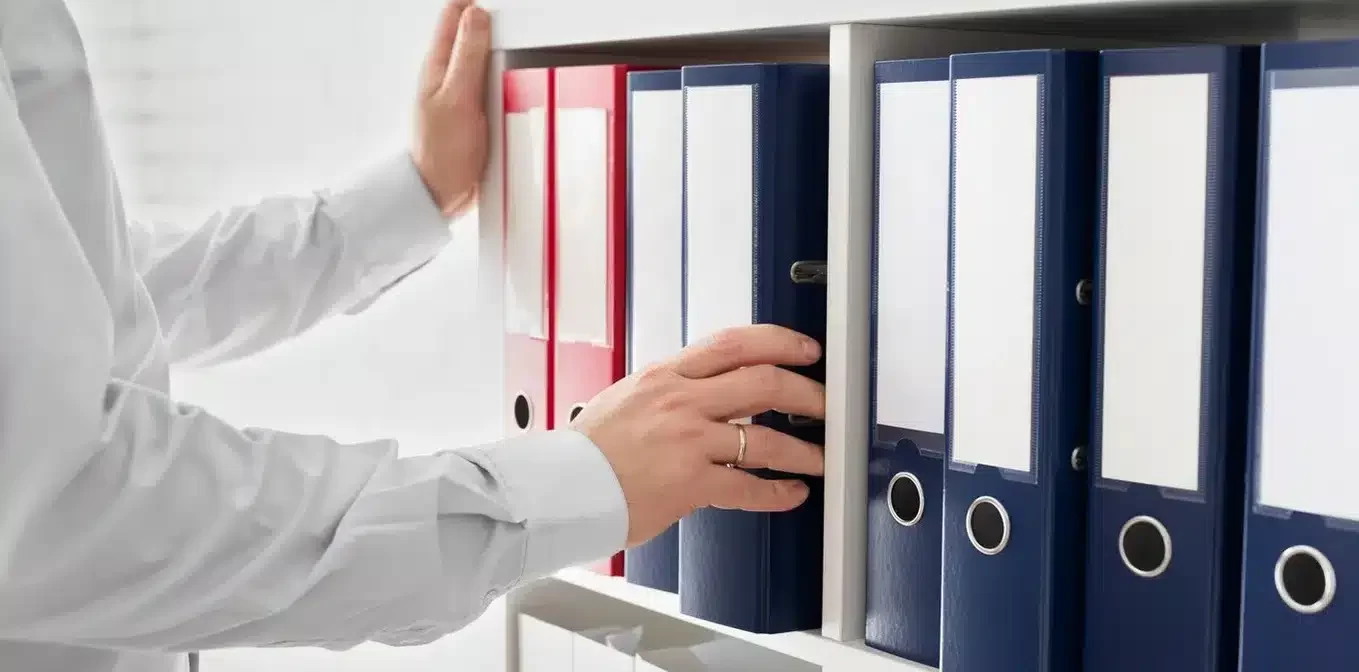All right—let’s ease ourselves into the world of procurement contracts. Think of this as your handy guide in the intricate dance of buying and selling. This is not just some sort of fancy document. No, sir, that is the playbook to make sure everybody is on the dance floor! Whether you’re an old pro or new to the business game, grappling with procurement contracts is critical: they set the stage, lay out expectations, and keep things running smoothly. Ready to bone up on these essential agreements? Let’s break it down and discover how they can be your ally in sealing the deal!
Table of Contents
- What is a Procurement Contract?
- What’s Covered in a Procurement Contract?
- Types of Procurement Contracts
- The Procurement Contract Process
- Navigating the Complexities of Procurement Contract Management
- Enhancing Efficiency in Procurement Contract Management
- Decoding Procurement Contracts: An Essential Guide
What is a Procurement Contract?

A procurement contract can, therefore, be defined as an official contract between a buyer and a seller, where the seller is under obligation to transfer the items in question or provide some necessary services at a specified standard, quality, or grade for a stipulated price, which might carry provisions for bulk quantities.
On the other hand, the buyer promises to take and compensate for the goods or services in quantity agreed upon between them, or they agree to undertake the expenses for the production or execution of the project. This contract, therefore, provides the floor in which transparent, well-structured relationships, removing uncertainties, are built between buyers and sellers. If you would like to take supplier management to higher levels based on our strategic sourcing guide, then get yourself a copy and boost cost efficiencies.
What’s Covered in a Procurement Contract?
A procurement contract essentially brings into clarity the terms that have defined the interaction between a buyer and a seller. Essentially, it outlines the obligations and expectations of the two parties, detailing the one each should contribute and the other should expect in return.
The critical elements of a procurement contract encompass the following:
Keeping Tabs on Performance
This process encompasses tracking contract efficiency, overseeing procurement interactions, implementing necessary adjustments, and concluding contracts. It’s all about ensuring that each party reaps the contract’s benefits, safeguarding their rights, and verifying that all obligations are met. Monitoring and performance control is vital to ensure that all involved parties honor all involved honor contractual commitments.
Taking Delivery, Inspection, and Giving the Nod of Approval
When the seller delivers the supplies, it’s crucial to examine the inventory to confirm that it meets the agreed specifications. The procurement contract outlines the procedures for conducting and managing this inspection.
Ending the Contract
Should there come the point where the parties involved in a procurement contract reach an impasse with unresolved differences, the contract specifies conditions for its termination, allowing both sides to part ways amicably.
Solving Disputes with a Plan B
Rather than resorting to legal action, which typically benefits only the attorneys, a procurement contract may specify a dispute resolution framework. This approach ensures that any potential conflicts arising in the buyer-supplier relationship have a predefined method for resolution.
Handling the Money Matters and Payments
This clause defines the management of financial transactions, encompassing invoicing, payment terms, methods, and preferences. A procurement contract clarifies the process of financial exchange upon the fulfillment of the contract’s terms.
Ensuring Performance with Securities
A procurement contract ensures a standard of performance that both the buyer and seller are required to anticipate and subsequently uphold throughout their professional engagement.
Wrapping Things Up and Closing the Deal
A procurement contract is a critical document that specifies the transfer process of supplies, acceptable conduct, and the expectations of a buyer and seller. It ensures a clear and mutual understanding of their business dealings.
Types of Procurement Contracts

According to your peculiar conditions, objectives, and risk preferences of your acceptance, one can avail of a wide range of procurement contracts in an agreement with your vendor. This is very important since, in a contract, they act as an instrument for managing risks by providing assurances related to the performance expected by both parties to the contract.
The three main types of procurement contracts that exist, along with the different subcategories under these significant types, are highlighted below.
Fixed price contract
A fixed-price contract guarantees that a buyer has firm price protection for the goods or services he buys, subject to a minimum order quantity.
Such contracts become valuable for the buyer’s supply chain in that adherence to the contract terms ensures a price and essentially ensures supply for a committed purchase volume. The essence of this is that it takes the form of supply volume assurance for a committed purchase volume.
Such contracts come in three primary forms: Firm Fixed Price: This is a straightforward commitment in which the buyer is expected to purchase a nominated volume amount, and the seller is required to deliver the goods at a specified price. It clearly outlines the volume and cost expectations.
Firm Fixed Price with Incentive Fee (FPIF): This contract category grants the purchaser a fixed price for a certain quantity but includes additional incentives should the seller exceed the contract’s stipulations. This arrangement gives the supplier assurance not only in paying for the goods supplied but also in “overpaying” the supplier for exceeding expectations. It is usually applied in scenarios where supply might be scarce.
Fixed Pricing with Economic Price Adjustment (FPEPA): This allows for the variation of the price of goods among the parties if it changes due to production costs. For instance, if inflation occurs after the signing of the contract and higher expenses are incurred by the seller, the latter may include this information and adjust it upwards so he will not get lower profits. It’s a safety net for suppliers against unforeseen economic fluctuations. Fixed-price contracts are often preferred in the purchase of standardized products and where prices are not anticipated to fluctuate. This enables a buyer to plan the requirements properly in the future; by then, the producer will have invested in the production of inventory, and the buyer will be guaranteed to source a steady supply.
Cost reimbursement contract
In a fixed price, both the buyer and the seller promise some assurance to the other. The buyer has to make an undertaking to purchase a minimum volume of the orders from the seller. In response, the seller commits to offering preferential pricing to the buyer. However, the preferential pricing offered is based upon the buyer fulfilling his obligation to place the minimum number of orders as stipulated by the contract.
The cost reimbursement contract, on the other hand, relies totally on another premise. The buyer reimburses all the capitation cost that occurs during the development or execution of the product or service to the seller. In a nutshell, that would mean the seller is reimbursed for all the actuals that are in relation to the development or completion of the project, ensuring that he does not suffer any financial loss out of the result.
There are three primary types of cost-reimbursement contracts:
Cost Plus Fixed Fee (CPFF): In this, the seller fixes the estimated cost to bid for any product, service, or project cost. After that, both parties carry out negotiation, and the buyer sets accurate quantity and quality standards. Under this category, therefore, the seller takes care of the entirety of responsibilities and costs related to the development. On completion, the buyer reimburses the seller with the money that he had used in the development and pays a fixed fee that was agreed upon before the commencement of the project. In such cases, the seller might absorb the amount for one reason or another.
Cost Plus Incentive Fee (CPIF): In this case, the government takes an investor to pay as a front-end charge and later compensates him more significantly than the charge in the form of an incentive fee when the project goes through all the contract-stipulated requirements. Much of the agreement can easily be breached in case one or both parties fail to adhere to the agreed terms of the project.
Cost Plus Award Fee (CPAF): The owner’s only responsibility is the launch of a project. The price that the user pays is the seller’s commission, which the buyer may decide to increase at their request. The choice for a contract Reimbursement Copa takes place if the product or service purchased is a bespoke item or if the seller is deeply involved in large projects with constant effort. These contracts are precisely laid down with the last cost variable: the buyer should only reimburse his payment upon the seller completing the set goals.
Time & material contracts
In a time and materials contract, the buyer agrees to pay for labor and materials necessary for a project, with a preset cap on time and resources to avoid excessive spending and fraud. This arrangement is typical in the tech industry, where, for example, a client might negotiate with a freelancer to set a limit of 80 hours at $100 per hour for website construction, ensuring budget adherence.
Upon project completion, the freelancer invoices the client, detailing hours worked and additional expenses, such as web hosting, premium themes, SaaS subscriptions, and business email setup. This promotes billing transparency and fairness, which is crucial for maintaining trust between the client and the service provider.
The Procurement Contract Process

In the dynamic world of procurement, speed and efficiency are key. Procurement teams streamline their processes by utilizing contract templates through contract management software. These templates are customized to reflect particular terms and details of the suppliers, enabling teams to mobilize quickly. Here’s how the standard procurement contract management workflow typically rolls out:
Identify the Scope of Work and Requirements
It begins with the project management team making a purchase requisition and listing down those materials, services, personnel, and resources that will be required to undertake a project to the procurement team. On the other side, the procurement team goes deeper into details to understand in full detail all the requirements for procurement of goods and services. This critical interfacing position between project management and procurement ensures that the scope of work is well defined, detailing to the last component what would be required for the successful execution of the work.
Solicit Bids
After the project specifications have been put in place, the procurement team goes out searching for the right vendors and suppliers, initiating the bid solicitation process by those who seem capable of meeting what the company requires. Sometimes, if the team has had experience with such a purchase before, they can refer to that while defining an approach. The market landscape gauging would start first with inquiries on the issues of information on any new kind of acquisitions. Then, after they get a better view of the scope of work and are in a better position to ballpark the figure, issuance would be an RFQ or RFP, depending on whether what is being sought are comprehensive solutions or price estimates for well-defined needs.
Select Proposal
Upon receiving the company’s request, suppliers and vendors submit their proposals or quotations, known as bids. The procurement team then evaluates these bids, comparing various offers. They ultimately choose the one that best meets their needs and goals, providing the most outstanding value at the most favorable price.
Draft a Contract
Subsequently, a procurement contract is created, utilizing a template for routine transactions or crafted anew for distinctive scenarios. When using a preexisting template, the procurement manager can swiftly input the essential details and share them with the supplier. In contrast, if the contract is being developed from the ground up, the procurement team collaborates with the legal department to verify that the agreement is comprehensive, incorporating all crucial information and adhering to legal standards and regulations.
Approve the Contract
Once the contract draft is prepared, it enters an approval phase, starting with the purchasing company’s leadership and then progressing to the selling partner. This phase often entails numerous exchanges between the buyer and supplier to discuss any concerns or suggestions and ensure expectations are aligned. Communication may occur via email, a shared online platform, or dedicated software accessible to both parties. Once all details are negotiated and agreed upon, both parties sign the contract, formalizing the agreement.
File the contract
Once the procurement contract is signed, the procurement team archives it for future reference. Often, these contracts are merely stored in email inboxes or filed away as hard copies, only to be revisited if issues arise during execution. This approach is far from ideal, as it risks misplacing the contracts or preceding the chance to leverage their details when drafting future agreements.
Conversely, keeping contracts in a specialized repository ensures they are readily accessible and allows the procurement team to mine essential data from them. Analyzing this information can provide critical insights into supplier dynamics and procurement practices, aiding the team in refining their strategies for upcoming negotiations and incrementally incrementally incrementally enhancing the contracting process. Moreover, having easy access to these contracts is vital for resolving disputes or addressing issues, as failure to promptly consult the relevant documents can lead to significant financial or legal repercussions.
Execute Purchasing Process
At the completion of the contract, the buyer starts the purchase-to-pay (P2P) cycle, which is the whole set of steps commencing with the creation of a purchase order to initiate a transaction. The process moves on to tracking delivery, followed by assessing the quality of the goods or services received, then the two-way or three-way matching exercise for validation, and finally, payment for the order.
Conclude the Contract, Evaluate, and Review
Once fulfillment parties fulfill, all responsibilities are completed, sometimes including a guarantee clause where the seller assures product quality for a set period before official closure. Subsequently, procurement leaders and project managers can evaluate the supplier’s performance under the contract, considering future collaborations if feedback is positive or analyzing any significant issues as part of their risk management strategy to mitigate future risks.

Managing procurement contracts presents unique challenges, as dealing with various business partners can introduce a range of demands and criteria. This complexity is amplified when a company engages with multiple suppliers and vendors at once. By acknowledging the common hurdles in procurement contract management and revisiting company practices, managers can reduce potential issues.
Streamlining Contract Creation and Approval
Ensuring effective communication is crucial, particularly between contract and project managers, to clearly define deliverables, quantities, and timelines, often requiring inputs from multiple departments and complicating the approval process. Utilizing a contract management tool with online features and streamlined approval workflows can simplify these tasks. However, a lack of consistency in contract drafting, possibly due to not adhering to approved language and terms, can pose risks and liabilities. Adopting automated contract templates tailored to procurement can help avoid such pitfalls.
Enhancing Negotiation, Signing, and Compliance
The various steps of the negotiations include plenty of contract iterations and can be pretty time-consuming and expensive; this can be easily shortened by legal software that allows for live negotiation with redlining. The length of this phase depends on whether the contract signing is done through traditional wet ink or with modern electronic signatures. Electronic signatures could take a lot of time and offer a better way for international deals. Post-signing, the concern should not be consigning the contract to the archives but actively using them for data analysis, which the organization will be able to refine towards contract management in the future and leverage insights for continuous improvements.
Enhancing Efficiency in Procurement Contract Management

Procurement contract management is a multifaceted endeavor that entails balancing various internal requirements and regulations while considering external dynamics, often making it a daunting task. To optimize and simplify the process, ensuring it’s efficient and less prone to errors or delays, several strategies can be adopted.
Adopting digital contract management software tailored for procurement can centralize contract storage, streamline workflows, and enhance contract visibility, facilitating easier monitoring of crucial milestones and deadlines. Such technology not only elevates the company’s procurement efficiency but also offers a platform for testing its effectiveness in specific company scenarios, like those offered by the Precoro team through their demos.
Moreover, developing standardized contract templates for frequent procurement situations, encompassing consistent terms, pricing frameworks, and legal stipulations, can ensure uniformity and lessen the time spent on crafting contracts from the ground up. Establishing transparent approval workflows that engage the appropriate stakeholders and utilizing digital tools for document exchange and electronic signatures can expedite the review and authorization processes, minimizing hold-ups.
Implementing automated reminders for critical contract events, including renewals, evaluations, or termination alerts, helps maintain deadlines and ensure adherence to contract terms. Additionally, maintaining a centralized contract repository ensures all contracts are orderly stored and readily retrievable, supporting efficient auditing and reporting, thereby significantly improving the overall management of procurement contracts.
Decoding Procurement Contracts: An Essential Guide

In a procurement contract, the roles and expectations between buyers and sellers are clearly indicated; thus, this helps a person in choosing the appropriate type of contract based on the specific needs of an organization. Thus, decisions should take into account the demands of the project, issues with the budget, and the clarity of scope in boosting the terms of procurement strategies and supplier relationships. The organization would, in that way, have added procurement efficiency by standardizing the contract templates and simplifying management by the use of automation tools to streamline approval processes.
FAQ
What does a procurement contract entail?
A procurement contract is commonly known as a purchase contract. It is usually a formal, valid, and legal agreement drawn up to expressively spell out the terms and conditions binding between a buyer and a seller, safeguarding the interests of both parties in the course of the procurement process.
Does a procurement order constitute a contract?
A Purchase Order (PO), therefore, can be said to be a formal buyer’s request to purchase a specified item or service from a seller. After the latter accepts it, it then becomes a formal agreement or, in other words, a binding contract.
How is a procurement contract formulated?
An effective procurement contract is designed with a stated scope of work, described deliverables, set timelines, and agreed payment conditions. This should further ensure that the contract with the said contractor or supplier spells out the products or services to be delivered by the contractor or supplier and the expected delivery timeline.
What elements are crucial in a procurement contract?
The scope of work is one of the most crucial parts of the procurement contract, as it clearly gives details of the products or services transacted. This includes quality expectations, quantities, and all special conditions.
What defines a procurement plan?
Procurement planning is a continuous process that indicates how a business plans to avail itself of its supplies of products or services. One is strategic and uses data and analytics to manage and evaluate the impact and efficiency of the procurement process.
